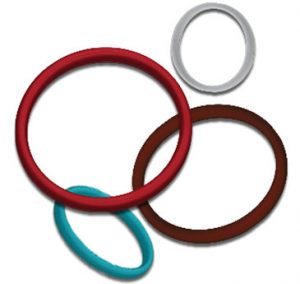
When researching some of the different ways rubber parts are made, you may come across compression molding. Countless rubber, as well as silicone, parts are made by compression molding. Like all molding processes, it involves the use of a mold cavity. Compression molding, however, offers several advantages over other molding processes. What is compression molding exactly, and how does it work?
What Is Compression Molding?
Compression molding is a manufacturing process used to create rubber products. From o-rings and plugs to grommets and bumpers, countless rubber products are made by compression molding. It’s known as “compression molding” because it involves the use of pressure
With compression molding, raw rubber material is placed inside of a pressurized mold. As the rubber material expands, it takes the shape of the mold cavity, thereby creating a new rubber product.
How Compression Molding Works
While there are different techniques for it, compression molding begins with an empty mold cavity. Raw rubber material is placed inside of the mold cavity, after which a plug is secured to the top of the mold. The purpose of the plug is to seal the mold cavity. At the same time, the plug is connected to a machine that allows for both heating and pressurization.
With the plug secured to the top, the mold is then heated and pressurized. Heat causes the rubber material to liquify and expand, whereas pressure causes to the rubber material to further expand so that it consumes all available space within the mold cavity. After the rubber material has fully expanded within the mold cavity, it’s allowed to cool. Cooling will revert the rubber material back into a solid state. Upon cooling and solidifying, the rubber casting can be ejected from the mold cavity.
The Benefits of Compression-Molded Parts
Compression-molded parts offer several benefits. Since they are made of rubber, for instance, they are naturally durable. They can withstand moisture and oil without degrading. This is why compression molding is often used to make seals and o-rings for machines.
Compression-molded parts are also inexpensive. There are other ways to produce custom-shaped rubber parts. Nonetheless, compression molding is fast and effective, thus allowing companies to easily produce compression-molded parts. The end result is a lower price.
Hopefully, this gives you a better understanding of compression molding. It’s a manufacturing process that’s used to create rubber parts by heating and pressurizing a mold. The mold cavity is filled with raw rubber material, after which it’s heated and pressurized.
